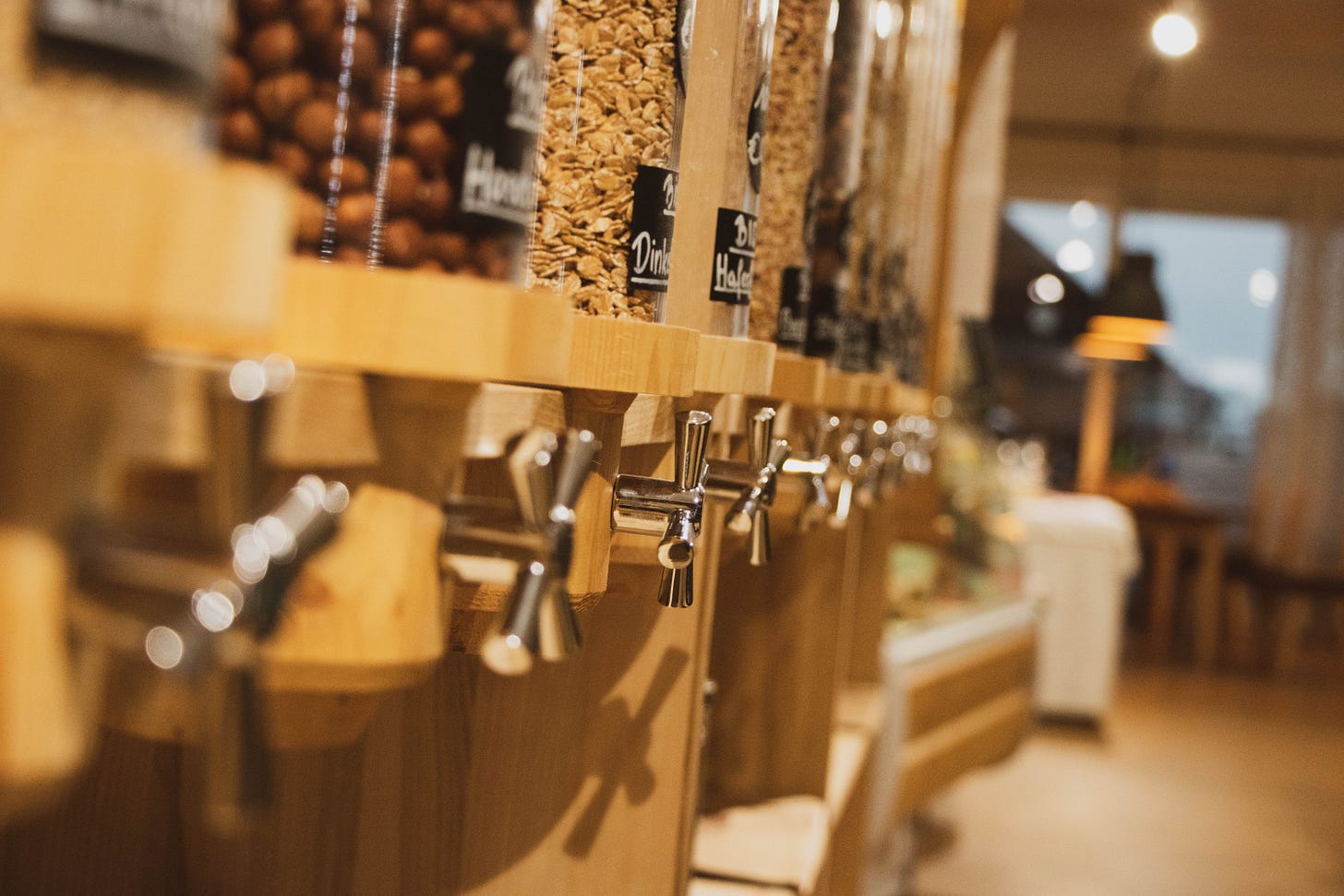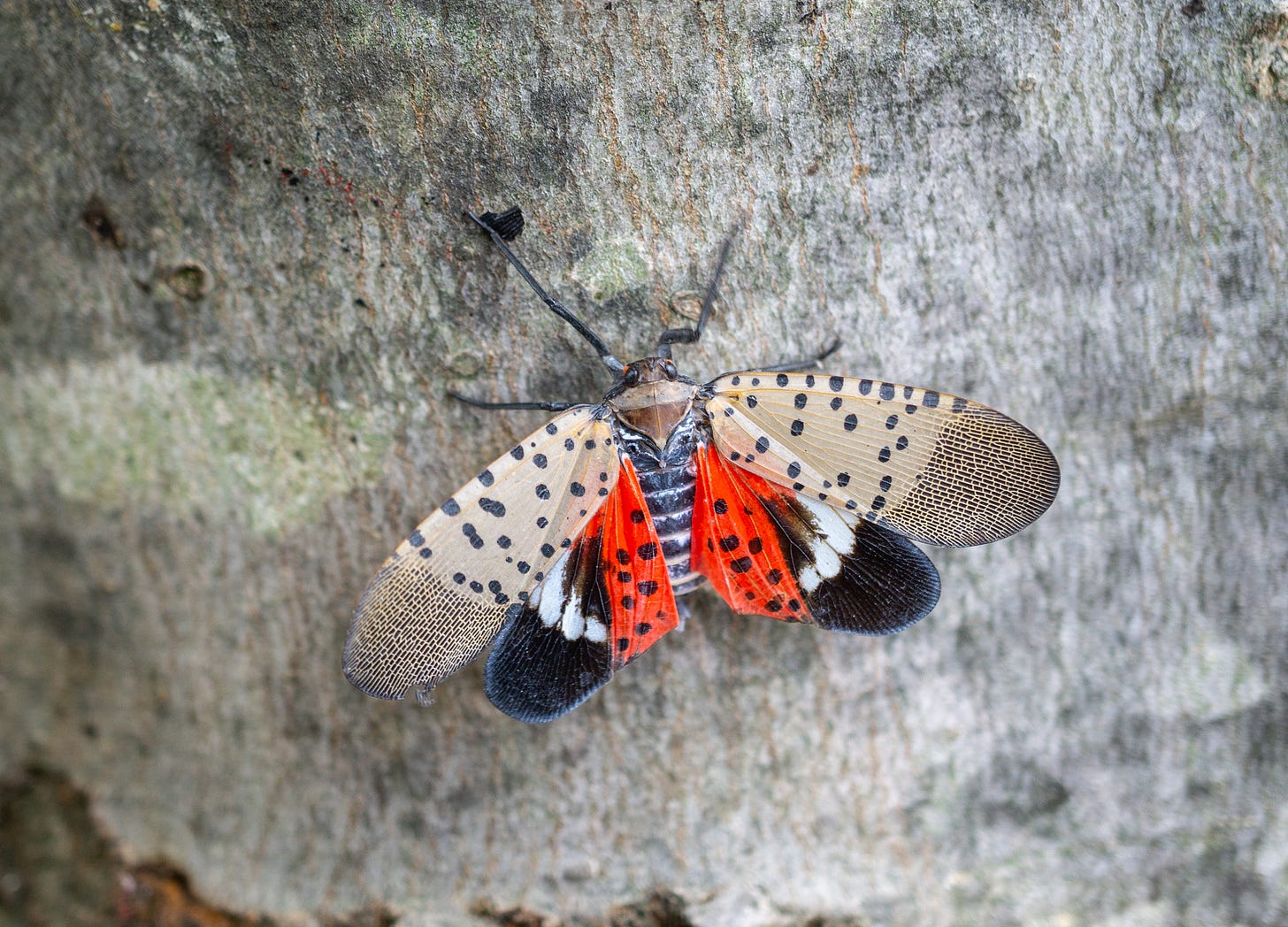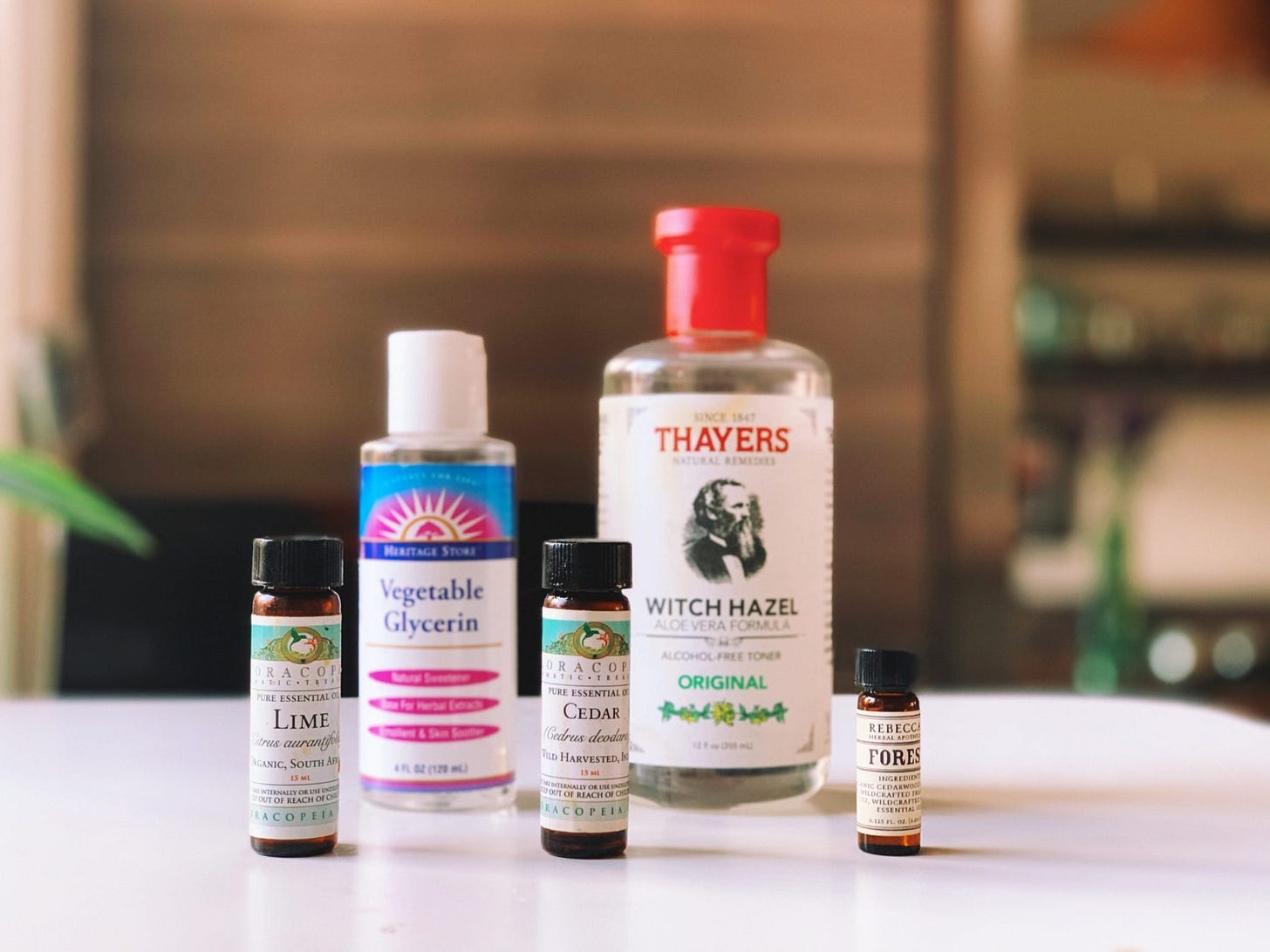Zero-Waste Movement Expands As Consumers Ditch Packaging
Boulder zero-waste pioneer offers Letter From the Forest readers $20 on first order
Grocery stores introduce much more than oatmeal, chicken, beans, chocolate donuts and soda to our homes. They also fill our trash cans with packaging: styrofoam trays that held meat, plastic-lined cartons of almond milk, bottles and jars, cereal-containing pouches within boxes, bags of chips.
Most of it never gets recycled. Instead, trucks ship it to landfills. Some of the packaging escapes the waste stream and defiles formerly pristine, natural streams, as well as the rest of Earth’s waterways and coasts: rivers, lakes, bays, oceans, estuaries, beaches and more. The problem goes far beyond the visual atrocities of plastic-littered waters and coasts. A study published yesterday by scholars at the University of California-Davis and Stanford University reviewed decades of scientific literature surrounding interactions between fish and plastic. The findings reveal widespread consumption of plastic by fish, and show how the problem continues to grow worse.
While it’s always been technically possible to reject packaging, it wasn’t easy. Few brick-and-mortar stores outside of food co-ops offered much in the way of bulk. Online shopping presented an over-abundance of bubble-wrap in addition to the containers in the boxes.
But thanks to the rise of zero-waste shopping options, no longer does a trip to the market automatically translate into pounds of tossed plastic.
Zero-waste grocery thrives in Boulder
My town of Boulder, CO supported a zero-waste place called Refill Revolution that I liked quite a bit, although most of the things for sale were home items, like bulk laundry detergent, rather than food. The spot closed during COVID.
At just about the same time as Refill’s exit, Nude Foods Market emerged. The operation, an online marketplace with home delivery (by bicycle) or pick-up, offers hundreds of foods and household items, all of them in reusable packaging, most of which are jars. Shopping at Nude Foods adds no packaging to the waste stream.
“I’ve been obsessed with waste for as long as I can remember,” says Nude Foods founder Verity Noble, who graciously offers Letter From the Forest readers $20 off their first purchase if they use the code word “forest” when signing up. “I stop people in supermarkets and say things like, `Excuse me, why are you bagging your bananas? They have skins.’ I often pretend that I’m taking a survey when I do this.”
Verity, a native of Norwich, England who moved to Boulder eight years ago, anticipated opening a brick-and-mortar shop, but COVID upended those plans.
“We thought, should we just wait this out? That was back when we thought COVID was going to be just a month or two,” says Verity. “We agreed to try online deliveries, did a pilot in June and launched in September.” For now, she plans on sticking with the online store, even after we wave goodbye to COVID. The model is working.
To get started, she and Nude Foods three other founders — Jimmy Uvodich, Rachel Irons and Matt Arnold — took advantage of a kitchen commissary leased by one of the founders behind a Boulder hotel. The space, borne out of the pandemic, involved entrepreneurs starting new “ghost kitchens,” places where all food gets either delivered to diners or picked up.
The team worked with cooks in the kitchens to source food in bulk, and to have them contribute towards Nude Foods’ prepared meal offerings, things like curried butternut squash soup, sweet potato chili and kombucha. They got in touch with local farms, offering them a fresh outlet for their produce. And then they started stocking up on large quantities of bulk staples: rice, pasta, peanut butter, dried fruit, coffee, chips, dish soap and much more.
Five months after the grocery’s formal launch, in September, sales are rocketing. Verity, a sales and marketing specialist by training, planned on sales growth of about 10 percent a month. But Nude Foods is expanding by 10 percent a week. She hopes to open a Nude Foods in Denver during this year’s fourth quarter. The city already supports at least four zero-waste shops.
Brick-and-mortar + online zero-waste grocers blossoming
The ditch-the-packaging movement is having a moment. Waste-free stores now serve customers in cities and small towns across the country — this website offers a state-by-state listing of zero-waste shopping resources.
Online markets now routinely emerge. In September Berkeley, CA-based Zero Grocery raised $3 million in seed funding to expand, in addition to the $1.7 million it previously raised. The company delivers food packed in glass jars, boxes and other containers — but no plastic. Zero Grocery picks up jars and Zero bags when it delivers customers’ next shipment.
Just as Nude Foods experienced rapid growth during COVID, so did Zero Grocery, which saw revenues increase by 20 times since last February, according to the publication Grocery Dive. Zero waste is not responsible for all of the growth — market research firm Mercatus determined that online grocery sales vaulted from $1.2 billion in August of 2019 to $7.2 billion in June of 2020, driven largely by the pandemic. But interest in zero waste represents a portion of Zero Grocery’s growth.
Meanwhile, investors like Procter & Gamble and Nestlé recently backed startup Loop with $25 million. The company, launched as a pilot in the United States in May of 2019, enjoys partnerships with more than 80 brands, sells 400 products around the world and has over 100,000 subscribers. Brands are mainstream, like Clorox, Gillette and Tropicana, as well as more niche, such as spice company Burlap & Barrel, and Noice natural toothpaste.
With Loop, online customers buy a wide range of products — nut butters, dishwashing detergent, spices and much more — and receive them in reusable containers. Products get shipped in a reusable Loop tote, rather than boxes stuffed with packing material. Customers return the reusable containers with the arrival of their next shipment.
Nude Foods aims for 2021 expansions
Nude Foods isn’t yet issuing press releases about multi-million-dollar investments. For now, the staff consists of four founders and a fleet of volunteers who make bike deliveries and help clean and pack boxes. The store sells 200 items now, but expands by a few products every week. Most weeks, customers order about 120 different products from the store. Orders must be placed by Monday afternoon; deliveries and pick-ups are Wednesday. Given the market’s growth, Verity plans to soon add Friday to the delivery and pick-up schedule.
Produce and eggs reign. But kombucha sales are nearly as strong, while chips, tofu and the lentil soup — based on Verity’s recipe — sell in abundance every week.
Looking ahead, Verity says the team plans to expand the grocery’s prepared foods offerings. She envisions a list of at least 20 prepared dishes. More personal care items, like wooden toothbrushes, should soon dwell on the site, too.
She has two young kids, and a financial accounting company. Busy. But ever since watching the animated movie WALL-E, Verity has obsessed over the planet’s trash. WALL-E, short for Waste Allocation Load Lifter Eath-class, is the last robot on Earth. He roams the planet working to clean it of its trash, one piece at a time.
Verity’s goal is less clean-up, and more prevention. Passion drives the business, and it carries through to the volunteers.
“We have one customer who comes and helps us clean up, just because she wants to,” says Verity. “She won’t take payment for the cleaning. She says she just wants to help.”
I can’t claim volunteer status. But I have supported Nude Foods with purchases, and will continue to shop there across 2021. Among other things, Annie and I savored the vegan Bolognese sauce with fresh, local pasta, all of it in jars. The kombucha was excellent.
Making shops like this work can’t be easy. Among many other things, it requires lots of time moving bulk items like coffee beans and dried garbanzo beans into mason jars, keeping track of jar returns, and coordinating deliveries by bike across a city of about 100,000.
But given Verity’s early triumphs, I’m hopeful we’ll encounter increasingly more zero-waste options in coming months and years.
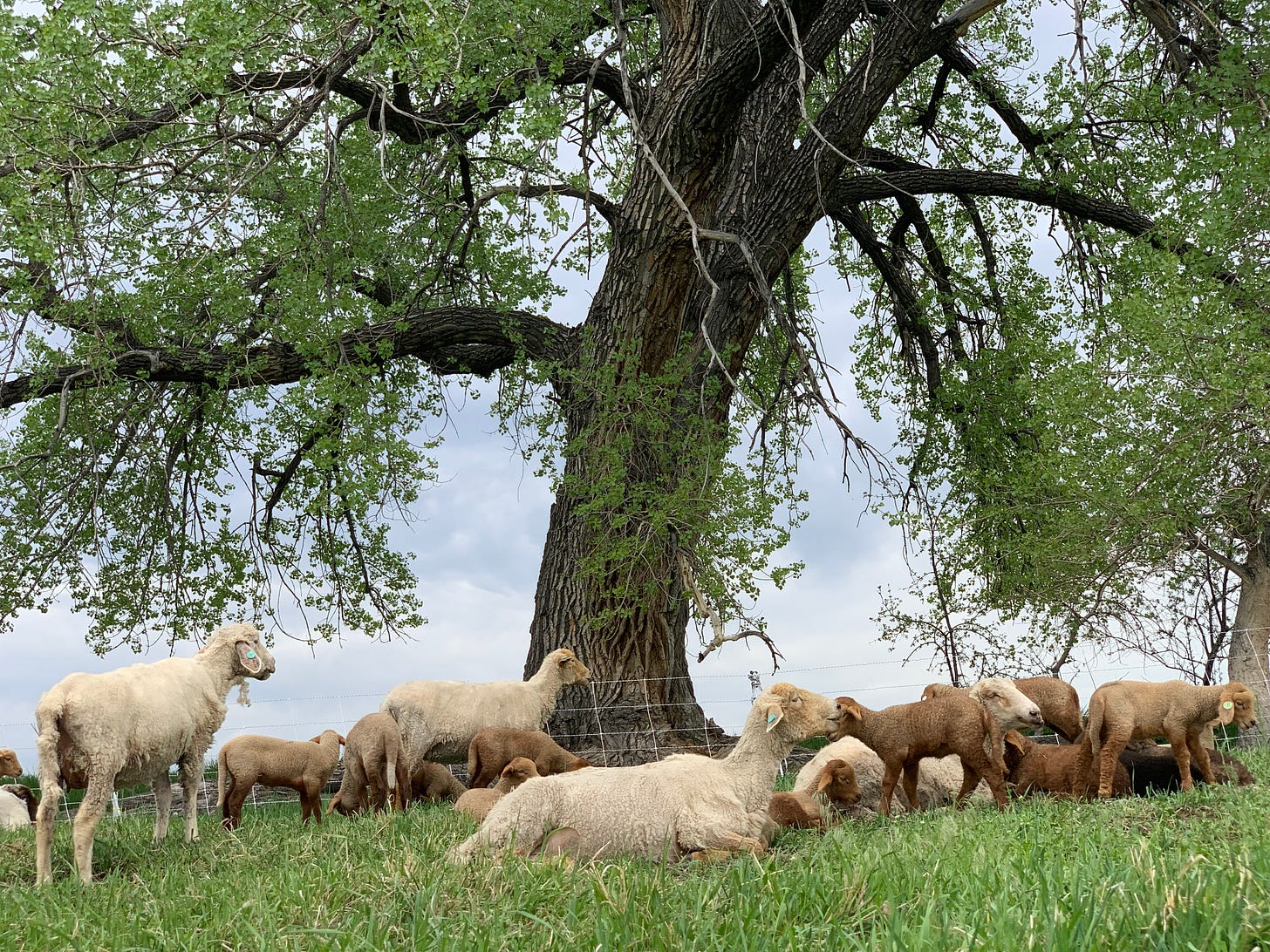
Plant Yourself
National Freelance Writers Appreciation Week begins on Sunday, February 14 — fittingly, on Valentine’s Day. During my more than 30 years of making a living as a writer, I’ve freelanced now and again, including a two-year spell when I supported our family entirely through freelance gigs. It was unsettling. A passion for writing and storytelling drives freelancers, not harvesting regular and smile-inducing paychecks. I understand the immense challenges that come with getting paid by the word, and hold freelancers in respect.
I scour the Internets every week for especially well-done works that align with LFTF’s mission. The word hunting is rewarding, and introduces me to myriad freelancers.
This week I offer two pieces, both of which touch on a passion: trees.
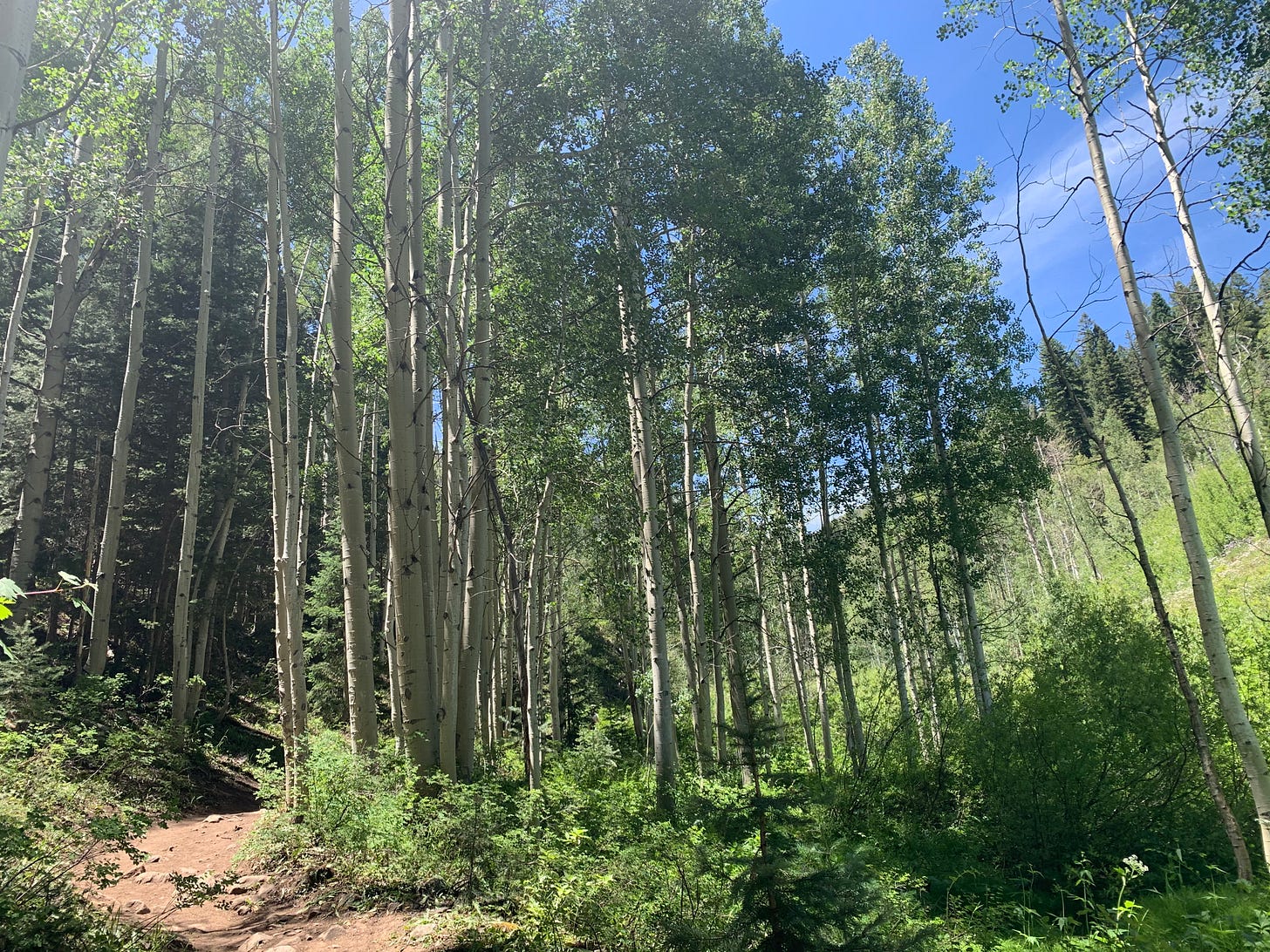
Colorado farmer and writer Kayann Short’s meditation on the beauty and power of trees sings. I don’t know Kayann, but we live fairly near each other along the eastern flank of the Rocky Mountains.
Some choice quotes:
Roots are limbs without bark, growing down instead of up, exposed on the mountainside by the wind and rain of violent storms, bare as skinless bone. If all goes well, those roots will anchor their trees for many more years than I will live.
With the loss of the resources and benefits trees provide—euphemistically called “ecosystem services,” as if trees make house calls–we should all be concerned about decreasing tree population. The truth is, however, forests will be able to adapt better than humans will. To use Woolf’s word, trees are “obdurate,” stubbornly holding to their course of action despite change. Their resilience gives me hope that forests will survive the changing climate in some form. The likelihood of human survival is much more tenuous.
Hiking along a river trail on the flatlands east of our farm one cold, but bright, January morning, my grandson and I pick up what looks like a deer femur from a pile of leaves, only to discover it is not a bone attached to a chunk of hide we hold, but a stick wrapped with bark.
The stick reminded me of the deer foreleg the farm crew and I found while picking vegetables six months earlier, the animal’s rough skin still attached, a bone dropped by a coyote or mountain lion as it crossed the field one moonlit night. Instead of burying it, we threw the leg into the trees to be eaten by other animals, insects, and organisms, providing a feast, as nature intended.
In reverence of that cycle, my grandson and I lay the bone-branch back where we found it to become litterfall, preserving, perhaps, one tiny, upright step in nature’s obdurate ways.
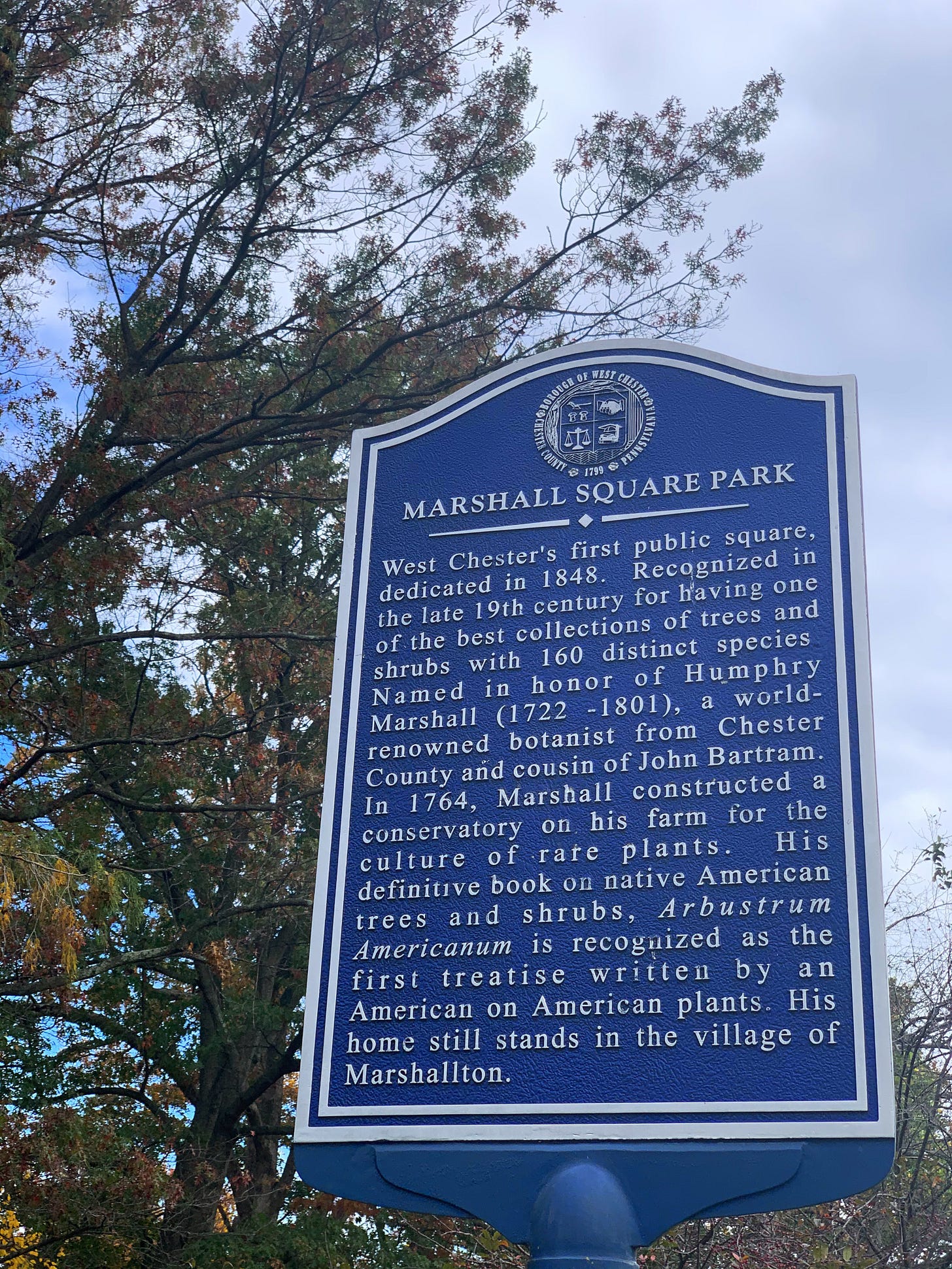
Another piece I stumbled across, from Philadelphia filmmaker and writer Anisa George, explores the alarming places where wilderness, agriculture and the Spotted Lanternfly intersect.
I encountered the colorful insect, with “wings spotted like a Dalmatian that flair open in vivid blocks of red and white” writes George, while back in my hometown of West Chester, PA last summer. My dad was dying. To help fortify and right my listing heart, I took occasional breaks from his bedside to wander the charming, cobblestone-sidewalked town. Sometimes the moth-like creatures lay so dense on patches of ground it looked as if a tidy ticker-tape parade had just passed through. Soon after, I noticed signs detailing their threat to trees and other plants, and wide ribbons of tape belting tree trunks. The tape served as Spotted Lanterfly traps.
George’s engaging piece revealed to me that the lanterfly problem is especially acute in eastern Pennsylvania, for now. But the insect, native to Asia, is already in other Eastern states and destined to march across parts of the country.
She also wrote about Ailanthus altissima, the “tree of heaven,” another invasive species from Asia that has stormed vast parts of the Northeast, especially in cities and alongside highways. I devoted too many hours to hacking away at this tree around our house in Baltimore. It stunk like hell. In China it is called chouchun, which means “foul-smelling tree.”
It turns out lanternflies are especially drawn to alianthus. They feasted on it in Asia, and now that alianthus infests so much of the Northeast, they dine on the tree in the United States, too.
Choice quotes:
The trailheads of state parks are now equipped with jugs of fly swatters next to posters that scream “STOP THIS INVADER!” in emphatically large print. In fact, the invasion hysteria reached such a fever pitch in the fall of 2019 that the Philadelphia police force had to issue a public service announcement to tell residents to stop calling 911.
“Please do NOT call 911 to report #SpottedLanternfly sightings,” the police department wrote in the tweet. “While they are a nuisance, they are not a police issue. And on that note, we, for one, would like to welcome our new insect overlords.”
Though lanternflies have been widely advertised as tree killers, it would be more accurate to call them tree distressors. They weaken trees, but it would take multiple years of sustained damage, or a particularly dry year, for an infestation of the lanternfly to actually kill a mature tree. The thin trunk of a sinuous grapevine, on the other hand, is like a woody straw in a kid’s juice box. “They suck the juice right out of them,” says Fraser.
One irony of ecological history is that the salvage logging done in oak-dominated hardwood stands, conducted in the aftermath of extensive gypsy moth invasion, permitted the unprecedented introduction of Ailanthus trees to native US forests—the lanternfly’s favorite host plant. These populations of Ailanthus trees are now paving the way for the spread of spotted lanternfly. Wherever humans are found interrupting ecologies, there are often these unintended, unforeseen consequences. “Humans are moving stuff around on a daily basis,” says entomologist Dr. Julie Gould. “It’s not surprising how many invasives we have; it’s actually astonishing how many we don’t have.”
The branches of the elm corpses have been removed and the trunks severed at about twenty feet high. Stripped of their bark, they appear like the smooth marble columns of an ancient ruin…
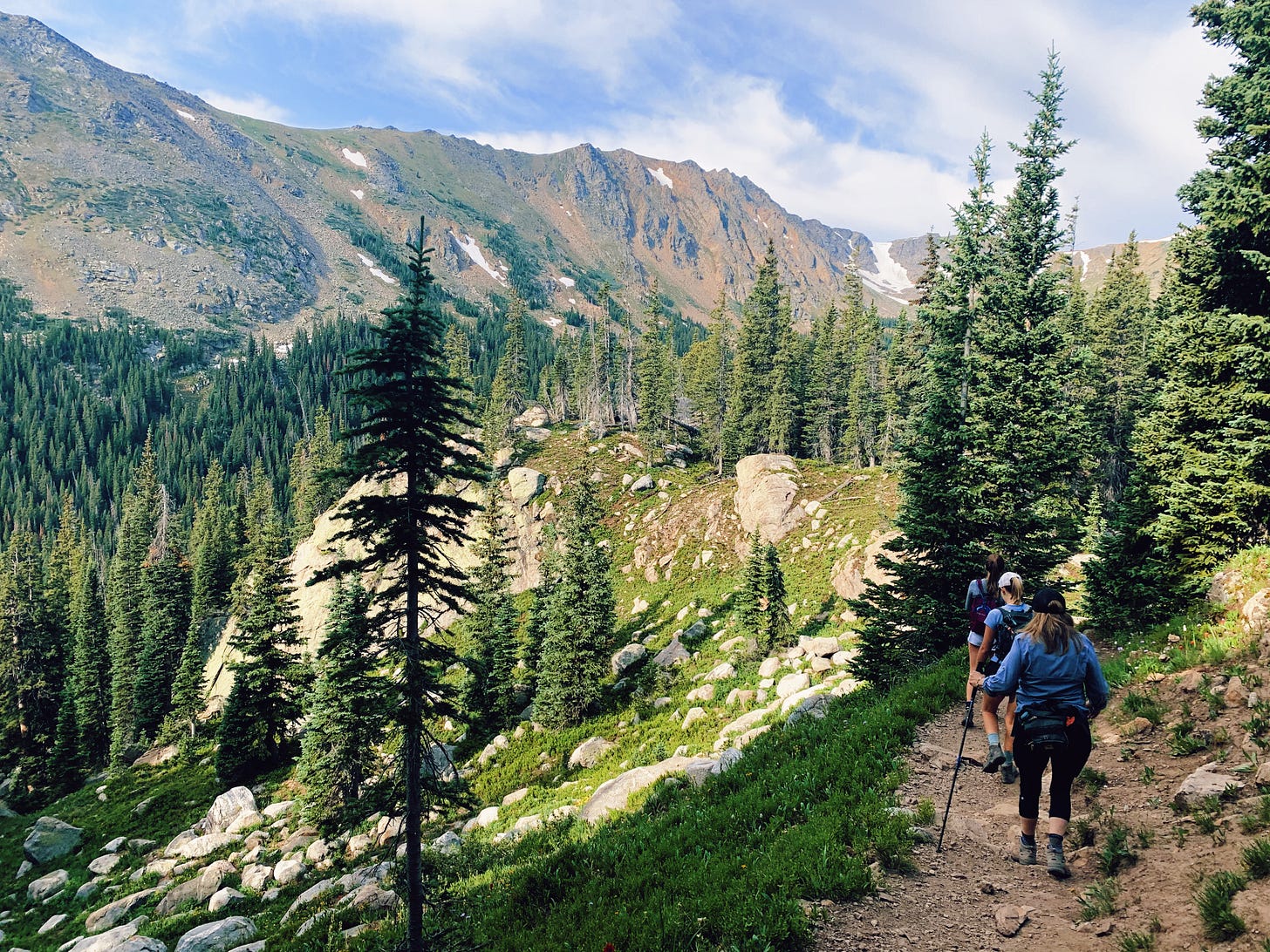
Arcadian Links Trailhead
I encourage LFTF readers to begin reading GreenBiz, a journalistic enterprise fizzy with savvy, plugged-in reporters and analysts who explore a wide range of topics under the mantle of “sustainability.”
One rewarding read is the publication’s State of Green Business 2021. Whether you are interested in EVs, aquaculture, carbon capture, ESG issues, circular economy or just about any other topic under the mantle of “sustainable,” you’ll likely encounter interesting analysis.
Consider its newsletters, too. Lauren Phipps, who writes the excellent newsletter Circularity Weekly, covered “plastic credits” in last week’s newsletter. I had never heard of them. Now, thanks to Lauren, I understand the concept and its pitfalls.
Harm-less: Aftershave in a plastic tube? Never! DIY your aftershave, and craft your own scents
I use aftershave after I shower even if I don’t shave. The sharp slap, the way it seems to rapidly penetrate pores, the tingle that lasts for a few moments — it all speaks to me. So it’s not really an aftershave; more like an aftershower. For me, the best ones hide in public, mostly reserving their aromas for the people splashing them on their cheeks.
For the longest time I bought aftershaves at Whole Foods Market and places like Natural Grocers in Boulder, but it became harder and harder to find ones that I liked sold in something other than plastic. So I started making my own. The project quickly persuaded me that DIY aftershave is a big improvement improvement over store-bought. With DIY aftershave, I get to craft whatever combination of scents I want.
The essential oils listed here represent just one option. The potential aromatic profiles of your own DIY aftershave are up to you, and nearly limitless.
One note: I bought the Witch Hazel and vegetable glycerin prior to becoming a bit OCD about plastic and #noplastic My sources for these key ingredients came in plastic, but they will not next time. I will find them in plastic-free containers.
1 tablespoon vegetable glycerin
3/4 cup witch hazel
25 drops cedarwood essential oil
10 drops vetiver essential oil
8 drops bergamot essential oil
Mix all ingredients together in a glass jar. Pour into a glass spray bottle, or some other bottle that work. The goal is a vessel that makes it easy to release small amounts of liquid at at time.





